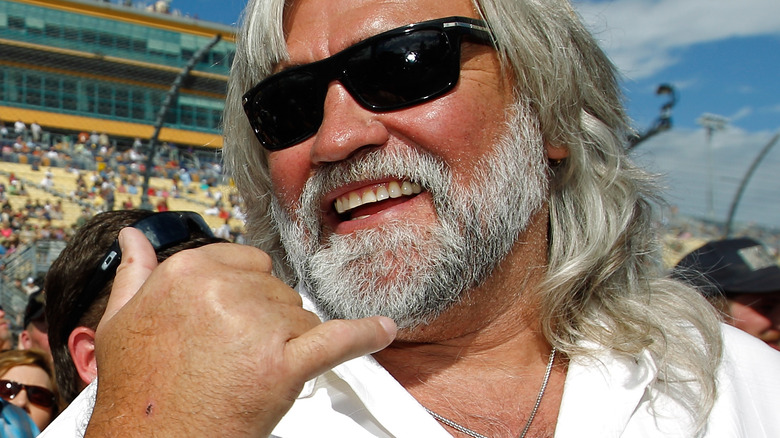Where Does Deadliest Catch's Fishing Quota Come From?
For fans sitting at home watching Discovery's "Deadliest Catch," plenty of them must wonder why these daredevil fisherman risk it all just to snag some delicious crustaceans. Well, the answer is obviously money! As long as those crawlers stuff their way into those giant pots, the crew's wallets follow suit. With that being said, it would seem that if the more the boat catches, the higher the salaries would go. However, that is not the case. There are rules set in place to protect both fishermen and crabs.
For every boat pushing its way across the Bering Sea searching for crab, there is an appointed limit to what they are allowed to catch. Without this quota, these fishermen would be free to trek back and forth from sea to drop-off dock, catching as many crabs as they can. In that case, not only would the better-equipped vessels possibly be taking profits away from other boats, but the overfishing would deplete the crab population, crushing the industry as a whole.
What makes this quota limit a bit more complicated is that not every boat has the same assigned ceiling. Two boats that set off at the same time, fish in the same area, and arrive back side by side, can have completely different amounts of allowed bounty. Since that is the case, how is that quota limit actually determined?
A boat's history determines it's future
Although the captains and crew on the boats featured in "Deadliest Catch" would love to stuff the onboard tanks up to the very top with as much crab as they can pull in, laws prohibit such behavior. Alaska Magazine explains that in 2005, the US government decided to implement this system in order to control the species' population. This plan of action is in place to keep the crab industry profitable for years to come. "Wild" Bill Wichrowski explained how this specific quota, which is unique for each boat, is determined.
When talking to the AVClub, Wichrowski explained that when it comes to a vessel's assigned crab-catching limit, it all has to do with the boat's catching history. "The state takes your catch history because it's all documented over the years ... " he said. "Then, out of that, you could take your five best years and that's how they developed the percentile for the quotas." And as difficult as it must be for captains and deckhands not to catch as many valuable crabs as they can, it truly is out of their hands. "It's all scientific, mathematic, and controlled by the government," explained Wichrowski.
And although this government-issued system appears to be exactly what the industry needs to maintain a long and prosperous future, a recent shocking turn of events has completely changed the game. In the last quarter of 2022, it was determined that the snow crab population has mysteriously been reduced to near-endangered numbers. This crushing blow, currently assumed to be a result from climate change, has essentially changed every boat's quota number to zero. That's because the decision has been made to shut down the industry while this crab population hopefully re-populates quickly.

